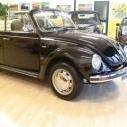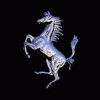[USA] Fiat 500 e 500C Abarth 2012
-
Contenuti simili
-
- 293 risposte
- 57442 visite
-
Abarth 500e Hatch & Cabriolet 2023 1 2 3 4 47
Pubblicato da __P,
- abarth 500e
- 500e
- (e 5 altri in più)
- 460 risposte
- 79649 visite
-
- 16 risposte
- 2582 visite
-
-
-






.thumb.jpg.902d2a4f20a129e92b6f6920407b81bd.jpg)







.thumb.jpg.46228d717c405acd43b45b79fddce6a4.jpg)







Messaggi Raccomandati:
Crea un account o accedi per lasciare un commento
Devi essere iscritto per commentare e visualizzare le sezioni protette!
Crea un account
Iscriviti nella nostra community. È facile!
Registra un nuovo accountAccedi
Sei già registrato? Accedi qui.
Accedi Ora